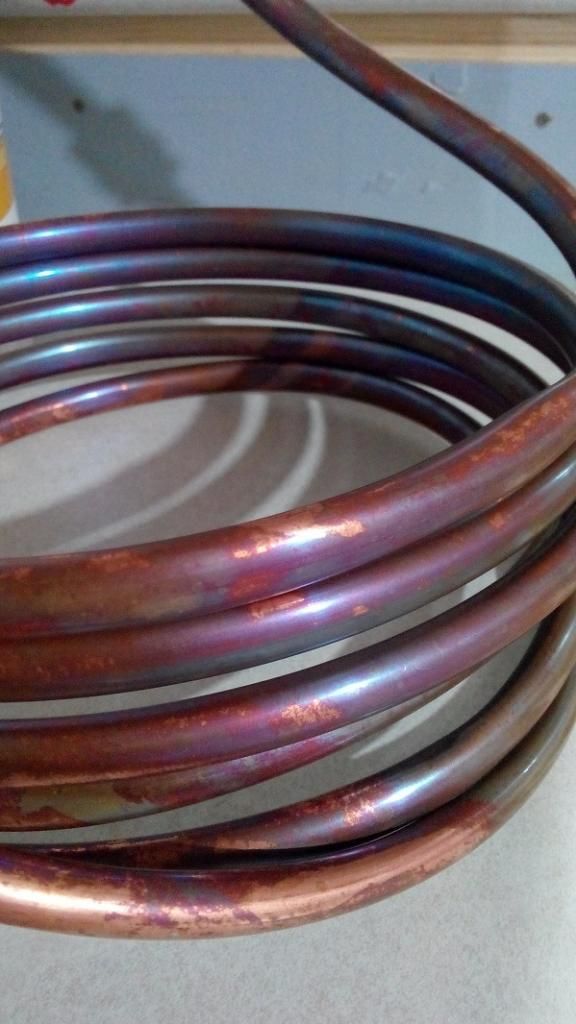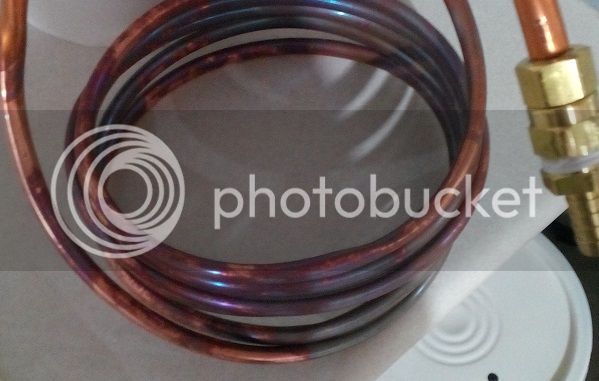This past weekend I brewed a pilsner and tried something slightly different this time. I used 1 ml of 98% sulfuric acid in 40 L of sparge water to drop the pH to 6.0 (used Bru'n Water for the calculation). Normally I do not treat my water, other than adding half a campden tablet.
In my current setup the wort is circulated through a copper coil in the HLT to keep it at the target mash temperature. This time though, after the water had drained from the HLT for sparging, I pulled out the copper coil and lo' and behold:


BLUE!
I took this picture today. The colors have darkened a fair bit over the past few days. When I first pulled the coil out it looked almost like it was covered in oil -- somewhat multicolored, but with something of a blue tinge to it. This got me concerned.
After scouring these forums and the internet, my theory is that the dilute sulfuric acid solution probably reacted with the oxide layer on the copper and formed copper sulfate (toxic). It doesn't sound like the dilute acid solution could react directly with the copper itself, but once the sparge water started to drain away, I'll bet the copper started to oxidize again and then reacted with the acid left on the surface.
Does this theory seem right? Do you think the beer is ruined? The fermentation seems to be progressing normally and the beer looks and smells normal. Any other theories?
(A friend of mine is a chemist, he took a sample of the wort today and plans to measure the amount of copper in there. Should have some figures in a day or two.)
In my current setup the wort is circulated through a copper coil in the HLT to keep it at the target mash temperature. This time though, after the water had drained from the HLT for sparging, I pulled out the copper coil and lo' and behold:


BLUE!
I took this picture today. The colors have darkened a fair bit over the past few days. When I first pulled the coil out it looked almost like it was covered in oil -- somewhat multicolored, but with something of a blue tinge to it. This got me concerned.
After scouring these forums and the internet, my theory is that the dilute sulfuric acid solution probably reacted with the oxide layer on the copper and formed copper sulfate (toxic). It doesn't sound like the dilute acid solution could react directly with the copper itself, but once the sparge water started to drain away, I'll bet the copper started to oxidize again and then reacted with the acid left on the surface.
Does this theory seem right? Do you think the beer is ruined? The fermentation seems to be progressing normally and the beer looks and smells normal. Any other theories?
(A friend of mine is a chemist, he took a sample of the wort today and plans to measure the amount of copper in there. Should have some figures in a day or two.)


